Raby House No 1 Sydney Buildings
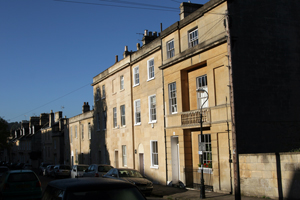
No 1 today
In 1812 the Earl of Darlington released land on the corner of Sydney Buildings for development to Thomas Cottell, James Deare and William Girdler. No 12 George Street was built.
The plot and house were sold in 1813 to Thomas Rogers for £630 and £12.12s.0d annual Ground Rent; this was later changed to £720 and £9.00.
Thomas Rogers died in 1826 and left the house [12 George Street] and the plot [1 Sydney Buildings] to his brother, the Rev John Methuen Rogers. In 1832 the Rev John Methuen Rogers sold the plot at auction.
It was bought by John Vaughan, Builder, and Edward King, Gentleman, for £520 [£52.10s deposit]. The house was built by John Vaughan as a build-to-let.
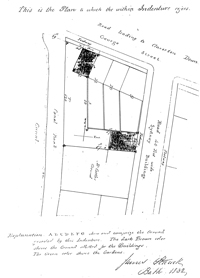
1832 Plan showing the plot
Click on the the image to see the plan enlarged
John Vaughan was a Master Mason and lived at Raby Villa, Sydney Warf, with his builder’s yard behind, adjacent to the canal. The front elevation of the house was designed by the well-known architect H E Goodridge, with whom Vaughan had collaborated on several developments including The Corridor, Beckford’s Tower and Cleveland Bridge.
Up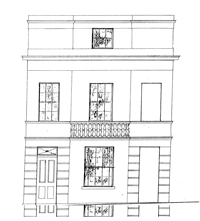
Front elevation of No 1 by H E Goodridge
In 1869 John Vaughan died, aged 83, and left the house to his only daughter, Maria Lewis, who predeceased him by a month, and then in trust to his grandson John Vaughan Lewis, aged 24.
John Vaughan Lewis married Julia Matilda Philips in 1869. The house was included in the marriage settlement but they continued to live in London.
In 1874 John Vaughan Lewis died, aged 28, and the house, still in trust, passed to a nephew of John Vaughan senior, William Edwards Vaughan, and his five sisters.
The house, now known as Raby House, was sold by the trustees in 1875 , at auction, to Wakefield Simpson, a railway engineer from Yorkshire, for £720. Simpson was the first owner-occupier but already lived in the house, with his wife, six children and a servant, when the 1871 census was taken. [No 12 George Street was sold off separately.]
Wakefield Simpson died in 1882 leaving the house to his third daughter, Mary, and grandson Wakefield Thomas Lloyd. The house was sold for £860 to Rev John Edward Jackson, rector of Leigh-de-la-Mere in Wiltshire.
The Rev Jackson died in 1890 leaving the house to his nephew, Edward Jackson, an engineer living in London. In 1918 Edward Jackson sold the house to Septimus Drew, a Bath house agent, for £1,875.
Up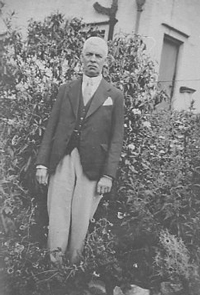
Septimus Drew
Septimus Drew was the second owner-occupier and the present owner's great-uncle. He lived in the house for 32 years up to his death aged 83 in 1950, and is buried in Smallcombe Cemetery.
The house was left to his sister, but she predeceased him so it was inherited by her daughter, Kathleen Smith, who split the property into three flats and moved into one of them with her father.
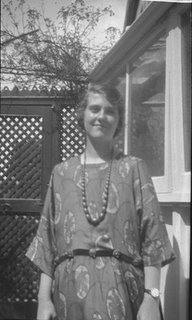
Kathleen Smith
When she died in 1969 Michael Davis’s mother bought it from the estate and rented it out as flats. Michael bought it from her in 1990 and restored it to single occupancy.
Extracts from the deeds with family photographs
Michael Davies
November 2008
Sydney Buildings History Group ©
UpBack